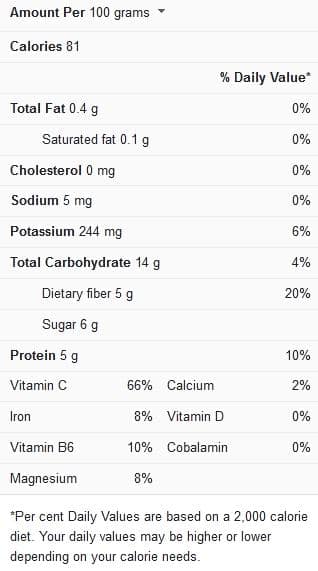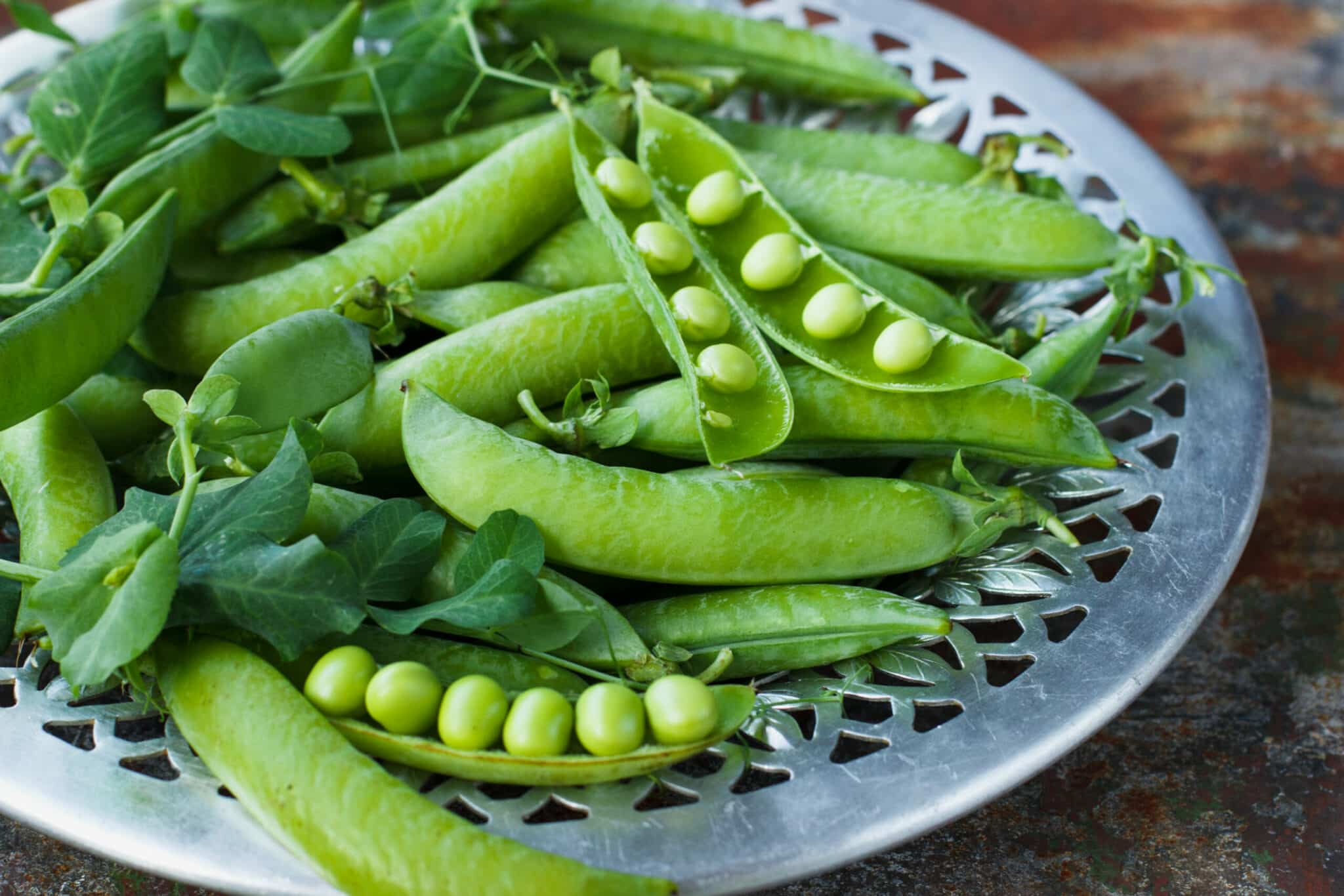Fresh peas are the perfect springtime delicacy, with their characteristic sweet, tender, and quick-cooking nature, not to mention how wonderfully adaptable they are. Peas, when cooked properly, can be a healthy, quick, and tasty side dish to serve with any main course, and they can be ready in as little as 5 minutes!
In this article, we’ll show you how best to cook peas in a pod, as well as all the extra tips you’ll be needing to turn the recipe into a delicious meal. Also, make sure to pay attention to specific timing guidelines to keep from overcooking them.
Peas nutrition facts

Tips for cooking peas in a pod
How to choose the best peas – Choose little peas that are younger, tastier, and more supple than giant peas for the finest flavor, and make sure they’re the freshest you can get. Peas contain a high sugar content which tends to change after they’ve been plucked, leading to a loss of most of their sweet quality. They also tend to become starchy and unappealing.
If the pods seem firm and green, the peas are most likely fresh, so you should avoid any fading or withering pods. Medium pods are preferable to huge, thick-skinned ones because they are more developed and contain bigger, firmer peas. Check the peas within a pod by breaking it open. They should be small-sized, brilliant green in color, and firm, with a soft and pleasant taste when you bite into one.
If you can find any large, mature peas, frozen peas are a good alternative. Mature peas are less adaptable and not as soft and delicious as young peas, and they require a longer, slower cooking time, and their harder texture may be better suited to recipes for stews and braises.
Freeze your peas if not using them immediately – Peas have a short shelf life, so it’s not recommended to store them for long periods, whether in their pods or already shelled forms. Ideally, you should store pods in a Ziploc bag in the refrigerator’s crisper drawer and use them up within the next few days.
An ideal way to store peas once they’ve been shelled is to freeze them. To keep their vivid color, parboil them in hot, salted water for a minute or two, then shock them in a cold-water bath until they become cool. Drain them and store them in zip-top bags in the freezer. This way, they should last for up to five or six months in the fridge.
Don’tDon’t overcook your peas – Peas are an excellent ingredient for quick evening dinners since, apart from their sweet flavor, they take a few minutes to prepare, especially when they’re they’re extremely fresh and young. The key to preserving their sweetness and vibrant green coloring is to cook them for as short as possible, just long enough to tenderize them.
You can also use frozen peas – Frozen peas are a great alternative if you can locate decent fresh peas or miss peas after the season. They’reThey’re normally selected young and soft and frozen right away, so they’ll taste better than fresh peas that may have been sitting about for too long. If sweet fresh peas aren’t available, most pea-based recipes can be made with frozen peas.
Recipe variations to incorporate peas into – Peas can be cooked in various ways, including boiling, steaming, stir-frying, sautéing, and quick-braising. You can use them as the centerpiece of a side meal, just like in quick-braised peas, or you can purée them into a soup, stew them, or blanch them briefly and put them in risotto or pasta-based recipes. They’reThey’re also delicious in their raw form in salads, especially when they’re small and tender.
A world of ingredients to choose from – Peas’Peas’ modest sweetness complements a wide range of flavors. Cured meats such as smoked ham, prosciutto, bacon, chorizo, and pancetta, tend to pair well with peas because their saltiness enhances the delicate flavor of the peas. Fresh mint is another classic taste companion that instantly brings peas to life.
Peas also go well with fresh spring herbs, including chives, basil, dill, chervil, and tarragon. Peas go great with scallions, onions, scallions, and other alliums, and they also blend in well with asparagus, fresh potatoes, carrots, and fava beans in springtime recipes.
View this post on Instagram
Cooking Time for Peas in a Pod
The timing guidelines in the table below will help you get the best out of your recipe when cooking peas in a pod:
Cooking procedure
Cooking time
Cooking peas in a pod
3 to 5 minutes
Print
Lemony green peas in a pod (4 servings)
Ingredients
- ½ cup of water
- 1¼ teaspoons of coarse salt, plus extra to taste
- One lemon, cut into eight wedges
- 4 cups (10 ounces) of fresh whole green peas (in pods)
- 1½ tablespoons of extra-virgin olive oil
- One small clove of garlic, minced
- Freshly ground pepper
- One tablespoon of roughly chopped fresh mint leaves
Instructions
- In a large skillet, combine ½ cup of water and salt. Squeeze the lemon wedges’ juice into the pan, put the juice in, and the lemon wedges themselves. Bring a large pot of water to a boil over high heat, add the peas and cover the pot. Simmer the peas for 1 minute or until they achieve a brilliant green color.
- Open the skillet lid and continue to cook for 1 to 2 minutes, or until almost all of the water has evaporated. Mix in the olive oil and garlic and salt and pepper to taste. Cook, frequently tossing, until the peas are thoroughly cooked through; this should take about 1½ minutes over high heat. Turn off the heat in the skillet.
- Toss in the mint and mix well. Place pears on a serving plate and serve immediately.
You can now enjoy your delicious and healthy peas as a side dish or a quick dinner option. If you want to see more recipe ideas for cooked peas in a pod, we recommend this video recipe.
